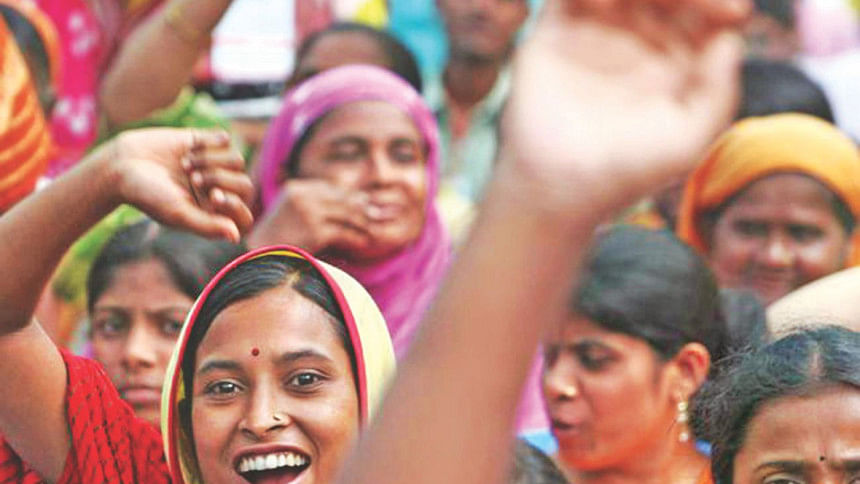Vibrant Bangladesh - A branding that fits

Whenever I used to pass through John F Kennedy Airport, the massive advertisement of 'Incredible India' would draw my attention. Despite being a country with diverse cultural traditions, India was able to come up with a single but enormously powerful sentiment - 'incredible'- to describe the country and attract global investors and tourists. Can't we think of an equally forceful qualifier for Bangladesh which will truly define what we are? 'Vibrant Bangladesh', for example, is an apt description to not only reflect our economic fundamentals but to also attract the global market in a vigorous way.
Branding is a serious exercise of marketing. It is an articulated positioning statement where gimmicks do not work. A robust branding can help Bangladesh in the same way a niche branding can promote a quality product. We are one of the most commendable growth generators in the world, but most of our achievements remain unsung. While a person should be modest while doing publicity, the rule for a country is just the opposite: don't be shy, only drive for greatness. In this world of fierce competition, no one else will sing for us. An aid-hungry nation of the 1970s has now turned into a food sufficient dynamic economy.
Bangladesh is one of the few developing nations which remarkably accelerated its growth every decade since the 70s in a consistent pattern. Bangladesh's average growth over the decade was 1.5 percent in the 70s. 3.5 percent in the 80s, 4.7 in the 90s, 5.6 in the 2000s and 6.3 percent from 2010 onward. Thus, our economic fundamentals herald the testimony of vibrancy. We, however, have failed to convey this unique message to the world in a cohesive way.
The branding of 'Beautiful Bangladesh' is more of an aesthetic impression than of a developmental image. It will attract more tourists, whereas a vibrant Bangladesh will imply promising investment avenues and higher potential returns prevailing in this emerging economy. Investors need this psychological impulse to choose a destination. 'Digital Bangladesh' is more of a message to reflect the government's endeavour to modernise our life with the latest technology than of a compelling call for investors. This is not a predominant reflection of Bangladesh where the level of information technology is still low. 'Digital Bangladesh' can nevertheless complement a vibrant economy.
When we say, 'Stable Bangladesh,' it essentially claims that macro-stability is much needed to attract conservative and moderate investors. Stability in developed economies has reached a level of high tranquillity often found in the graveyard. That notion does not necessarily signify an appropriate hotspot for investment. Instead, aggressive investors are happy to take risks as long as the prospects of high returns are evident. And that is where the Bangladesh economy is, as the average rate of returns is 15 percent or higher.
Since we do not think much of our branding, Japan has kindly come forward to fill the vacuum. Their attempt is much welcome and appreciable. But the symbol of the Bengal tiger to portray Bangladesh has turned into a kind of cliché. While the number of tigers in Sundarban is gradually decreasing, we continue to use this symbol in diverse fields such as sports, business, tourism and what not.
Bangladesh has remained vibrant in their growth performance over the last 40 years, and it will remain so for at least another 30 years, before we exhaust the benefit of the demographic dividend. The added prospects of connectivity have already invigorated the growth potential for a country that must be regarded as a vibrant economy.
Bangkok's Suvarnabhumi Airport is truly suvarna, meaning golden. Thailand brands it as an "airport of smiles." Unlike some other airports such as ours, where officers behave like grumpy policemen as if non-VIP passengers are offenders or refugees, Suvarnabhumi renders an ambience of beauty, smiles and duty with excellence. Thus branding must fit the object. Improper branding becomes an object of ridicule. In the early 1990s, the government branded Bangladesh as an emerging tiger. However, in comparison to the other four Asian tigers – Singapore, Hong Kong, South Korea and Taiwan - that seemed to be an exaggeration, more than anything else.
Authenticity is the main mantra of any successful country branding. Malaysia's branding of 'Truly Asia' is authentic in characterising Asia's cultural bonds and economic vigour, which is present in the country. Sri Lanka's branding as 'Wonder of Asia' is an attempt to amplify the image of the country, but 'wonder' is susceptible to various interpretations. Instead another branding, 'Refreshingly Sri Lanka' is appropriate in depicting the refreshing journey of the island economy, which underwent a ruinous civil war. 'Amazing Thailand' is good to attract tourists and to arouse curiosity among investors in a way the word 'incredible' suits India. Some strategists attempted to brand Pakistan as a 'Sufi country.' Sufism radiates peace, humanity, and liberal-mindedness , traits that do not appropriately describe current Pakistan. Rather, another branding of Pakistan such as 'Naturally Beautiful' fits the country better but is not necessarily attractive to investors. Profit-makers are not tourists or poets.
A comparative advantage for Bangladesh - whose macro-stability is probably in the best condition in the region and whose growth acceleration over the decades is impressive - is quite evident. Hence, the word 'vibrant' is extraordinarily powerful and is perfectly suitable for Bangladesh. Let us go ahead with a 'Vibrant Bangladesh' to build the future of our country.
The writer is chief economist of Bangladesh Bank.

 For all latest news, follow The Daily Star's Google News channel.
For all latest news, follow The Daily Star's Google News channel. 



Comments